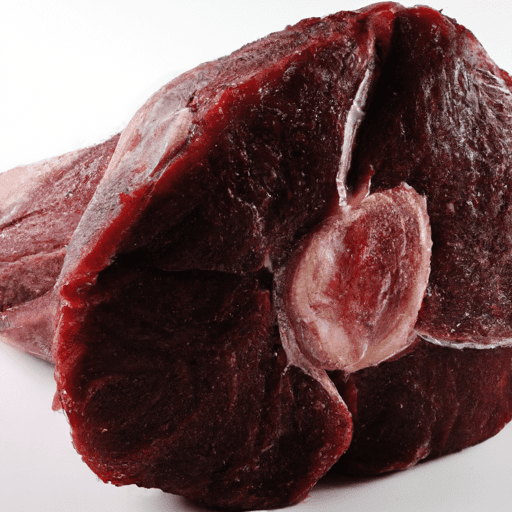Exploring the Delicious World of Beef Shanks
If you’re a food enthusiast who loves to savor the rich, succulent flavors of slow-cooked meat, then it’s time to dive into the wonderful world of beef shanks. These underrated cuts of beef are like little packets of savory goodness, waiting to be transformed into melt-in-your-mouth dishes that will leave your taste buds craving for more. In this blog post, we’re going to explore everything you need to know about beef shanks - from their taste and common uses in cooking to their nutritional value and fascinating history.
The Flavorful Taste of Beef Shanks
Beef shanks are renowned for their deep, rich flavor profile that comes from their ample marbling and connective tissue. Once cooked, they develop a fork-tender texture and a distinct beefy taste that is both robust and satisfying. This cut is known for infusing dishes with a luscious, meaty flavor, making it a favorite in various cuisines around the world.
Versatile Uses in Cooking
A true culinary workhorse, beef shanks find their way into a plethora of dishes across different cultures. In traditional Chinese cuisine, they are simmered in aromatic broths to create delicious and hearty beef noodle soups. In Italian cooking, they take center stage in the classic dish “Ossobuco,” where the shanks are braised to fork-tenderness and served with a flavorful gremolata. Slow-cooked beef shanks also shine in Mexican barbacoa, a traditional dish featuring tender, seasoned meat for tacos or other vibrant dishes.
Due to their collagen-rich nature, beef shanks are ideal for slow cooking methods such as braising or stewing. They lend themselves to dishes where long, gentle heat transforms tough cuts of meat into succulent, mouthwatering masterpieces. The marrow-filled bones of beef shanks also make them perfect for adding depth and richness to stocks and broths.
Nutritional Value
Beef shanks offer more than just incredible taste and texture; they are also packed with essential nutrients. This protein powerhouse provides an excellent source of high-quality protein, which plays a crucial role in building and repairing muscles. Additionally, beef shanks contain valuable minerals like iron, zinc, and vitamin B12, which support energy production and contribute to overall well-being.
A Fascinating History
Beef shanks have long been a staple in traditional cuisines, with roots that can be traced back hundreds of years. In many cultures, beef shanks were valued for their affordability and versatility, often being utilized in dishes that made the most of the animal. From hearty stews served to laborers during medieval times to celebratory dishes handed down through generations, the history of beef shanks is intertwined with the culinary heritage of many nations.
Beef shanks may be an unsung hero in the world of meat cuts, but they are nothing short of culinary treasures waiting to be explored. Their incredible taste, versatility in the kitchen, and nutritional value make them an excellent choice for those seeking a rich and satisfying dining experience. So, whether you braise them, stew them, or simmer them, be prepared to elevate your dishes to new heights with these delectable beef shanks. Happy cooking!
Note: When working with beef shanks, it’s important to give them ample cooking time to achieve maximum tenderness. Slow and low is the key to unlocking their full potential!
Beef Shanks
Origin: Beef shanks are cuts of meat taken from the lower leg of cattle. They are commonly sourced from the shin area, which is the tough, muscular section between the knee and ankle joints.
Common Uses: Beef shanks are typically used in slow-cooked preparations to take advantage of their rich flavor and natural tenderness when properly cooked. They are commonly used in dishes like osso buco, a traditional Italian recipe where the shanks are braised with vegetables, wine, and broth.
Nutritional Benefits: Beef shanks are a good source of protein, iron, zinc, and vitamin B12. As a tougher cut of meat, they contain more connective tissue and collagen, which break down during cooking and can provide additional health benefits, like supporting joint health and improving skin elasticity.
Unique Properties: Due to the high collagen content, beef shanks are ideal for slow cooking methods like braising and stewing. The connective tissue transforms into gelatin during cooking, resulting in a rich, flavorful sauce or broth. Beef shanks are also known for their rich marbling and deep flavor.
Historical Significance: Beef shanks have been used in various cuisines throughout history. In Italian cuisine, osso buco has its roots in the 19th century Lombardy region. The dish gained popularity globally in the mid-20th century and continues to be a sought-after delicacy. The slow and lengthy cooking methods used for beef shanks have been techniques utilized by many cultures to make use of tougher cuts of meat and extract maximum flavor.




Use the share button below if you liked it.
It makes me smile, when I see it.